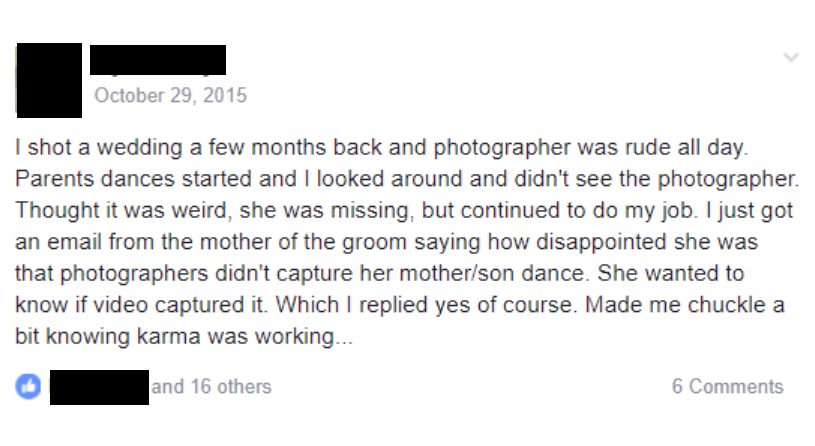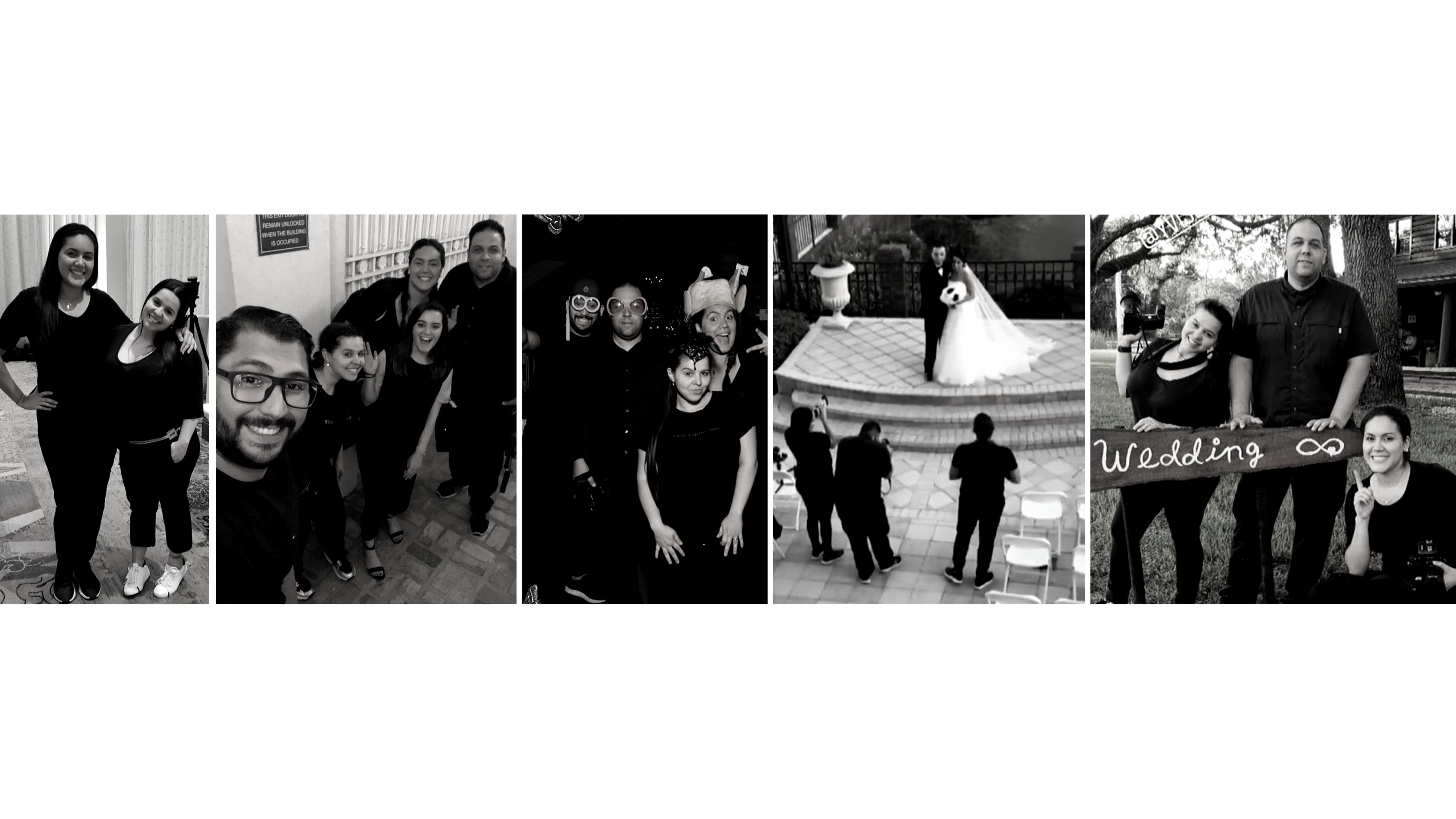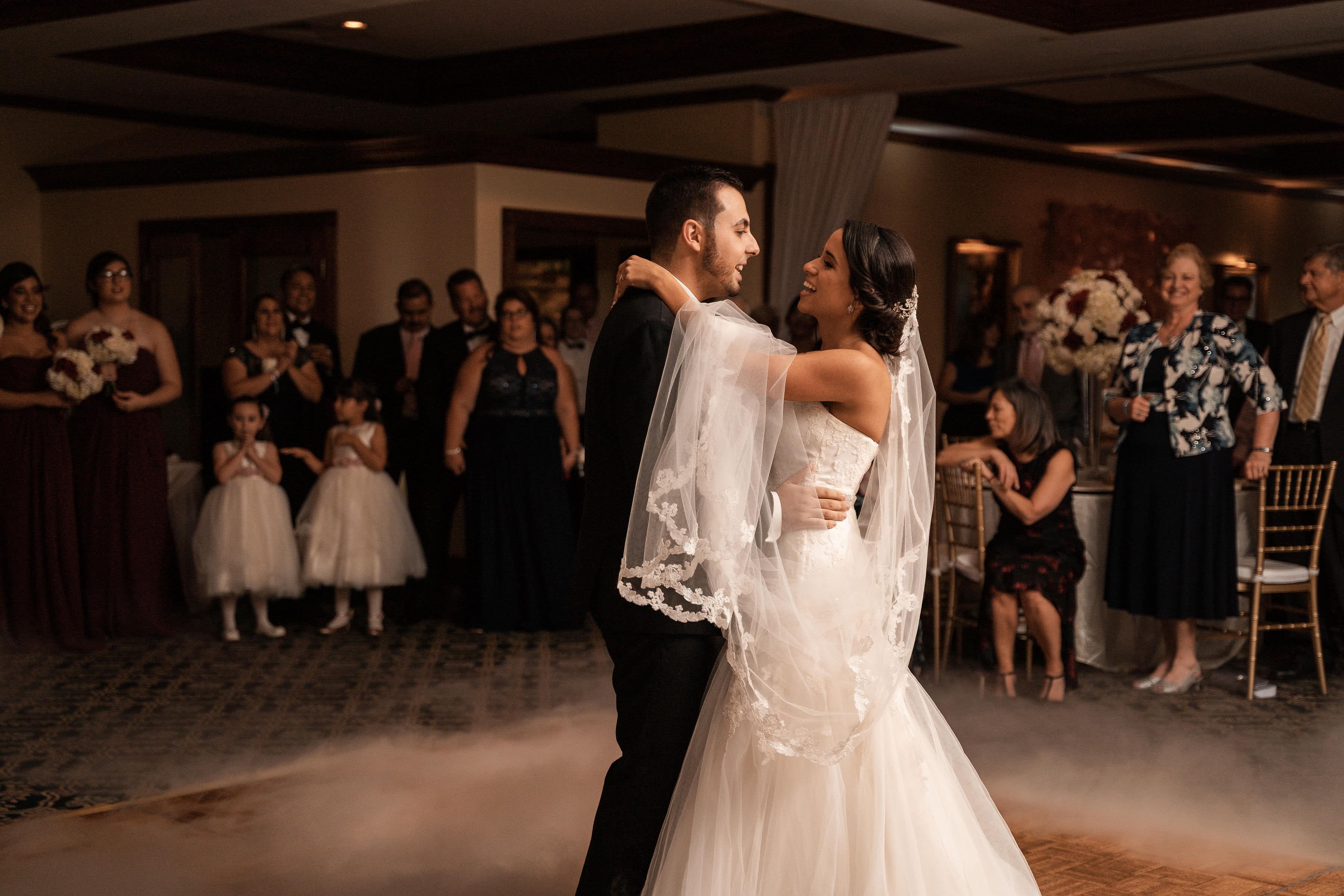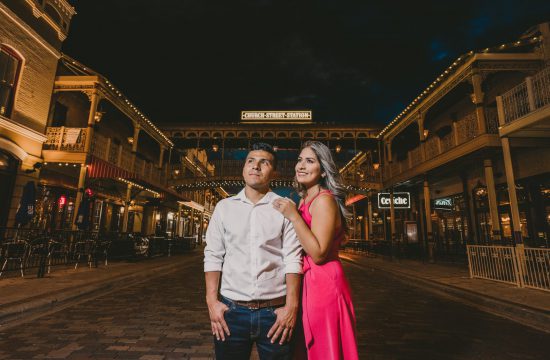It’s not a foreign concept in the wedding industry. Wedding Photographers and Videographers can sometimes butt heads, with both sets of professionals jockeying for similar angles, sharing limited time on the busy wedding day.
- “The photographer used up all the couples session time!”
- “The videographer ruined my shot of the grand entrance!”
- “The photographer keeps using flash!”
- “The cinema team keeps interrupting my posing!”
As a studio with both photography and cinematography, we can understand both sides. The solution is simple and starts with the realization that client happiness is the only thing that matters that day.
Both sides need to swallow their pride, compromise, and share the limited time and space. With strong communication and the right attitude, true professionals should be able to work together to get a complete product for the sake of the client.
To avoid the risk, it’s best to book a single combined package with the same company for both photography and videography. Here are 5 reasons why:
1) Shared Incentives and Accountability
This much is obvious: a photographer wants to get the best possible images from a wedding and the videographer wants to capture the best possible cinema from the wedding. Their business reputations are on the line.
By hiring the same company you align priorities, and both teams are incentivized to create the best possible COMBINED product. This leads to both teams being more willing to share time, communicate, and coordinate.
Hiring the same company also makes one company 100% accountable for the final results, so your separate creative teams can’t blame each other for missed shots, ruined shots, bad communication, and other potential issues.
This example below was taken from a Facebook group consisting of wedding cinematographers and videographers. As you read it, ask yourself this: would the cinematographer posting this comment have let this happen if he and the photographers were part of the same company?
 If they were part of the same company, I’m sure they would have had a strong relationship rather than expressing happiness at the other’s failures. Furthermore, they would have supported each other and ensured that everyone was in position for the major events of the wedding.
If they were part of the same company, I’m sure they would have had a strong relationship rather than expressing happiness at the other’s failures. Furthermore, they would have supported each other and ensured that everyone was in position for the major events of the wedding.
2) Better Communication, Workflow & Positioning
Shared teams have experience working with one another, so they can anticipate each other’s positioning, style, and needs. This results in fewer shots “ruined” by one team obstructing the angle of the other.
Think of it like this: you wouldn’t hire a band who is performing together for the first time at your wedding. You probably wouldn’t bet on a basketball team who doesn’t play together regularly. The synergies between the photo and video teams who work together all the time will translate into a better overall product.
Here are a few real-world situations that we have experienced:
First Dance: Our cinema teams know that our photo teams want a few wide-angle shots of the first dance before moving on to close-up and medium crops. So cinema stays off of the dance floor for the first 10 seconds, allowing our photo team to get what they need before moving in for cinematic action shots closer to the couple.
Couples Session (Drone Shots): Our photo teams know when our cinema teams need drone shots during a couples session, so they find a covered area (or dark shaded area) in order to stay out of the video.
Couples Session Action and Walking Shots: There are certain shots during couples session that we know both photo and video need. One example is a fun and casual walking shot that introduces movement into the posing set. When this happens, both teams shoot the same thing at the same time, side by side. Teamwork like this allows us to be more efficient with limited time.
Heartfelt Messages: During prep, our cinema team needs audio recordings of brief messages from the bride to the groom and vice versa. These are emotional, heartfelt moments that require silence in the room. Being aware of cinema’s needs, our photo team turns their cameras to a mode with quiet clicks (known as “silent shutter”) and they turn off their flash. This teamwork allows both teams to capture what they need from these beautiful moments.
These are just a few examples of many that happen throughout the wedding day, leading to an overall better-combined product.
3) The Common Shared Vision and Style
Booking a combined photography and videography package ensures a consistent style and quality. Additionally, you’ll experience a shared vision among you (the client), the photo team, and the video team. So if you happen to hate a specific pose, the entire team will share that vision and knowledge. If you want to avoid silly or cheesy poses, everyone is on the same page. If you want a moody, dramatic, or editorial look and feel to your wedding, everyone can work to ensure your vision comes to life in both your photography collection and your wedding cinematography.
4) Fewer Contracts & Admin for a combined Photography and Videography Package
Using the same company for both photography and videography will save you time in the booking process. You can set up a single meeting for both leads, communicate with one set of studio management, sign a single set of contracts, and have single wedding photography and videography meeting prior to the wedding. Booking with multiple companies can potentially double the administration in terms of your photo and cinema.
5) Wedding Photography and Videography Package Discounts
While price probably isn’t your determining factor when shopping for your photography and videography, it doesn’t hurt that most companies, including ours, have potential pricing discounts when you book both photography and cinematography together. To get a custom quote, contact our studio management! Thanks for reading, and we hope to be a part of your big day!






